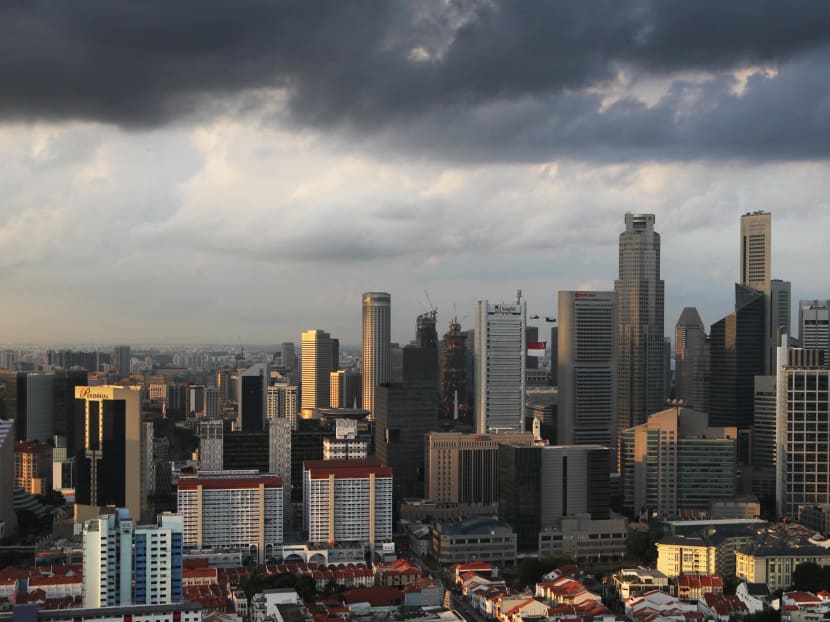Singapore narrows GDP growth forecast for the full year
SINGAPORE — Singapore has slashed the upper end of its annual growth forecast as ongoing risks from an uncertain external environment and a slowdown in global trade continue to weigh on the export-dependent economy, in a move market watchers here said is a “more realistic” outlook.
SINGAPORE — Singapore has slashed the upper end of its annual growth forecast as ongoing risks from an uncertain external environment and a slowdown in global trade continue to weigh on the export-dependent economy, in a move market watchers here said is a “more realistic” outlook.
The growth forecast for 2015 is now between 2 per cent and 2.5 per cent, compared with the previous estimate of between 2 per cent and 4 per cent, said the Ministry of Trade and Industry (MTI) today (Aug 11).
“The global economy performed weaker-than-expected in the first half of 2015. For the rest of the year, global growth is expected to pick up gradually, although the pace of growth is likely to be uneven across economies,” said the MTI.
Several downside risks in the external economic environment remain, said the MTI, highlighting concerns over the real estate sector and stock market in China, the ongoing political uncertainty in the Eurozone and the appreciation of the United States dollar and impending normalisation of US interest rates.
“With the slowdown of economic growth, especially in emerging economies being a recurring theme, Singapore’s new 2015 growth range of between 2 per cent and 2.5 per cent range is more realistic,” said Mr Song Seng Wun, Economist at CIMB Private Banking. “The narrowing was expected because the growth in the first-half of the year came in at the lower end of the previous 2.0 to 4.0 per cent range forecast.”
The final print of Singapore’s second-quarter gross domestic product expansion was revised upwards to 1.8 per cent year-on-year from the flash estimate of 1.7 per cent, the MTI said today. That compares with a 2.8 per cent on-year growth in the previous quarter.
On a seasonally-adjusted basis, second-quarter GDP declined an annualised 4 per cent in the three months through June, from -4.6 per cent in the advance print, the MTI said, reversing from a 4.1 per cent growth in the preceding quarter.
However, the underlying details remain weak, and “Singapore’s second-quarter GDP contraction is unlikely to be fully recaptured in the second-half given tepid external conditions - especially in China - even if output in the volatile manufacturing segments fully rebounds”, said HSBC economist Joseph Incalcaterra.
“The main problems encountered by the Singapore economy are still the low labour productivity, and the high unit labour cost and business cost of manufacturing,” said Dr Tan Khay Boon, Senior Lecturer at SIM Global Education. “These problems have continued to plague the manufacturing sector and are now exerting greater pressure on the services sector.”
The manufacturing sector -- which accounts for one-fifth of the Singapore economy -- contracted by 4.9 per cent on-year in the April-June period, extending from a 2.4 per cent decline in the previous quarter. The sector was primarily weighed down by output declines in the biomedical manufacturing and transport engineering clusters.
The transportation and storage sector declined by 0.9 per cent on-year, due to less sea cargo handled. Accommodation and food services sector was also lower by 0.6 per cent compared to a year ago.
Other sectors such as construction, wholesale and retail trade, information and communications, finance and insurance, business services and other services posted year-on-year growths.
In a separate report today, trade promotion agency IE Singapore also cut the upper end of its annual forecast for non-oil domestic exports (NODX). The growth is now expected to be between 1 and 2 per cent, from 1 per cent to 3 per cent previously.
Exports for Republic in the second quarter grew at 2.1 per cent, lower than first quarter’s 4.8 per cent growth as shipments of both electronic and non-electronic products weakened.
These downside risks are unlikely to shake the Monetary Authority of Singapore into another policy revision though.
The central bank, which uses the exchange rate as its main monetary policy tool, resisted pressure in April to add to an unexpected January easing.
“This narrowed (GDP) growth forecast lies within our planning parameters of the current exchange-rate policy,” MAS deputy managing director Jacqueline Loh told reporters today. “The current stance of a modest and gradual appreciation of the Singapore dollar remains appropriate to ensure medium-term price stability.”







